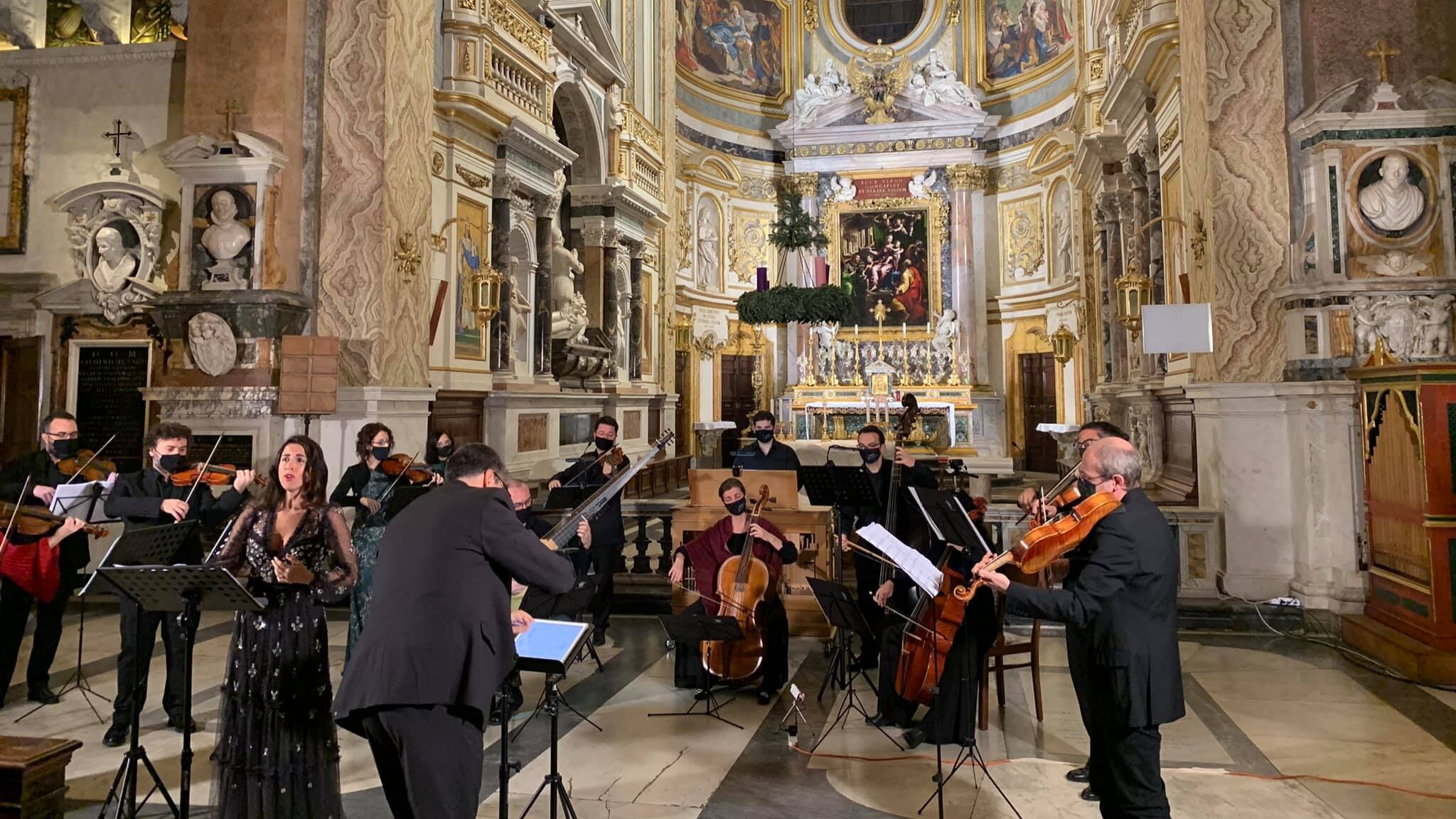A baroque September in Rome.
The fifteenth edition of the festival anticipates a significant part of the programming at the end of the summer, with a series of concerts that will take place from 23 to 30 September in the churches of the capital.
The leitmotif of the Rome Baroque Festival 2022, proposed by the artistic director Michele Gasbarro, will be
Rome and Naples
, a meeting between two musical realities witnessed by the migration of artists and united by the common stylistic orientation aimed at indissolubly integrating the observed principles of tradition and needs. expressive of modernity.
The concerts that open and close the festival (23 and 30 September) are very significant, as expressions of this common orientation.
The first, proposed by
Rebecca Ferri
(cello) and
Elisabetta Ferri
(harpsichord), retracing the numerous journeys between Rome and Naples made by the composer Pier Leone Ghezzi following the nobility, shows the points of contact between the two cities and the coexistence between style ancient and modern style.
Federico Guglielmo
's final concert
with the
New Scarlatti Orchestra
of Naples entitled
Nel nome degli Scarlatti
it is a Neapolitan 'reading' of the Concerto Grosso, a typically Roman form, but updated to the orientations expressed by the Neapolitan school.
A precious contribution with music by Alessandro Scarlatti, to compositions by less known, but no less important authors, such as Francesco Scarlatti, Cesare Ragazzi, Nicola Matteis jr and Angelo Ragazzi, presented for the first time in modern times.
The concerts at the center of the review investigate the developments of the Neapolitan musical repertoire.
The two instrumental concerts, that of
Enrico Baiano
on the harpsichord (24 September) and
Michele Carreca
, lute (28 September) present music by Neapolitan authors of the 16th and 17th centuries, little known and unjustly considered 'minor', who play a key role in the musical culture of the City and in the development of the Neapolitan 'School'.
A contest of ideas and stylistic varieties so precious and surprising that it amazes even more when looking at the sacred genre.
The extended Mass for 5 voices and fillings by Gaetano Veneziano of 1693, presented in the first modern performance by the
Ensemble Festina Lente
(25 September), is a fascinating sound fresco that alternates contrapuntal sections in the old 'observed style' with solo arias and concerted duets .
An explosion of colors that makes us understand the derivation of the most famous 'Roman' Scarlattian masses and how the genius of the two Scarlatti, born in Palermo but Neapolitan by training, owes his fortune significantly to the 'school' and wisdom of tradition.
Principles that even make the rhythmic echoes of Hispanic flamenco integrable with the languages of 'cultured' art, as demonstrated by the concert proposed by
Amaya Fernandez Pozuelo
(27 September);
and, again, how the artistic 'journey' undertaken by Domenico Scarlatti between Italy, Portugal and Spain shows itself, in its heterogeneity, organic and virtuous in the Sonatas performed by
Paolo Perrone
, on the violin and
Salvatore Carchiolo
on the harpsichord (28 September): an integration that solves the 'challenge' between tradition and modernity in the civil coexistence of the 'school'.
The concerts will continue with the Organ Festival at Nero's Tomb on the four Sundays of October (9, 16, 23 and 30), the aperitif concerts at Garbatella, at the One Sense restaurant via A. Cialdi 3, on the four Sundays in November. (6, 13, 20 and 27).
In December the Roma Festival Barocco will propose the usual winter festival.
The first concert is scheduled for Friday 2 December at 8.30 pm in the Basilica of San Lorenzo in Lucina with the performance of the
Mattutino de 'Morti
(1770) for solos, choir and orchestra by Davide Perez.

